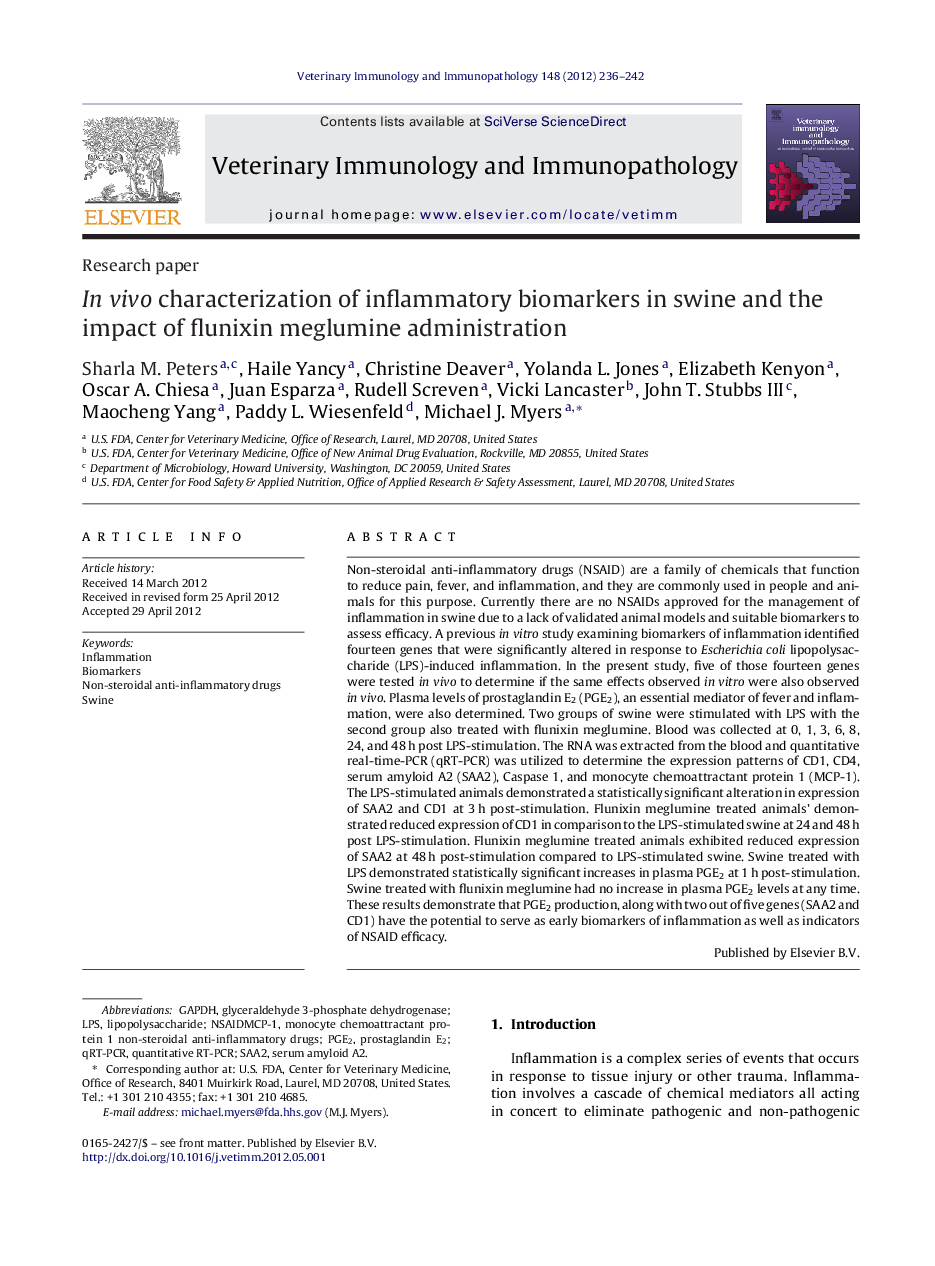| کد مقاله | کد نشریه | سال انتشار | مقاله انگلیسی | نسخه تمام متن |
|---|---|---|---|---|
| 2461861 | 1555055 | 2012 | 7 صفحه PDF | دانلود رایگان |

Non-steroidal anti-inflammatory drugs (NSAID) are a family of chemicals that function to reduce pain, fever, and inflammation, and they are commonly used in people and animals for this purpose. Currently there are no NSAIDs approved for the management of inflammation in swine due to a lack of validated animal models and suitable biomarkers to assess efficacy. A previous in vitro study examining biomarkers of inflammation identified fourteen genes that were significantly altered in response to Escherichia coli lipopolysaccharide (LPS)-induced inflammation. In the present study, five of those fourteen genes were tested in vivo to determine if the same effects observed in vitro were also observed in vivo. Plasma levels of prostaglandin E2 (PGE2), an essential mediator of fever and inflammation, were also determined. Two groups of swine were stimulated with LPS with the second group also treated with flunixin meglumine. Blood was collected at 0, 1, 3, 6, 8, 24, and 48 h post LPS-stimulation. The RNA was extracted from the blood and quantitative real-time-PCR (qRT-PCR) was utilized to determine the expression patterns of CD1, CD4, serum amyloid A2 (SAA2), Caspase 1, and monocyte chemoattractant protein 1 (MCP-1). The LPS-stimulated animals demonstrated a statistically significant alteration in expression of SAA2 and CD1 at 3 h post-stimulation. Flunixin meglumine treated animals’ demonstrated reduced expression of CD1 in comparison to the LPS-stimulated swine at 24 and 48 h post LPS-stimulation. Flunixin meglumine treated animals exhibited reduced expression of SAA2 at 48 h post-stimulation compared to LPS-stimulated swine. Swine treated with LPS demonstrated statistically significant increases in plasma PGE2 at 1 h post-stimulation. Swine treated with flunixin meglumine had no increase in plasma PGE2 levels at any time. These results demonstrate that PGE2 production, along with two out of five genes (SAA2 and CD1) have the potential to serve as early biomarkers of inflammation as well as indicators of NSAID efficacy.
Journal: Veterinary Immunology and Immunopathology - Volume 148, Issues 3–4, 15 August 2012, Pages 236–242